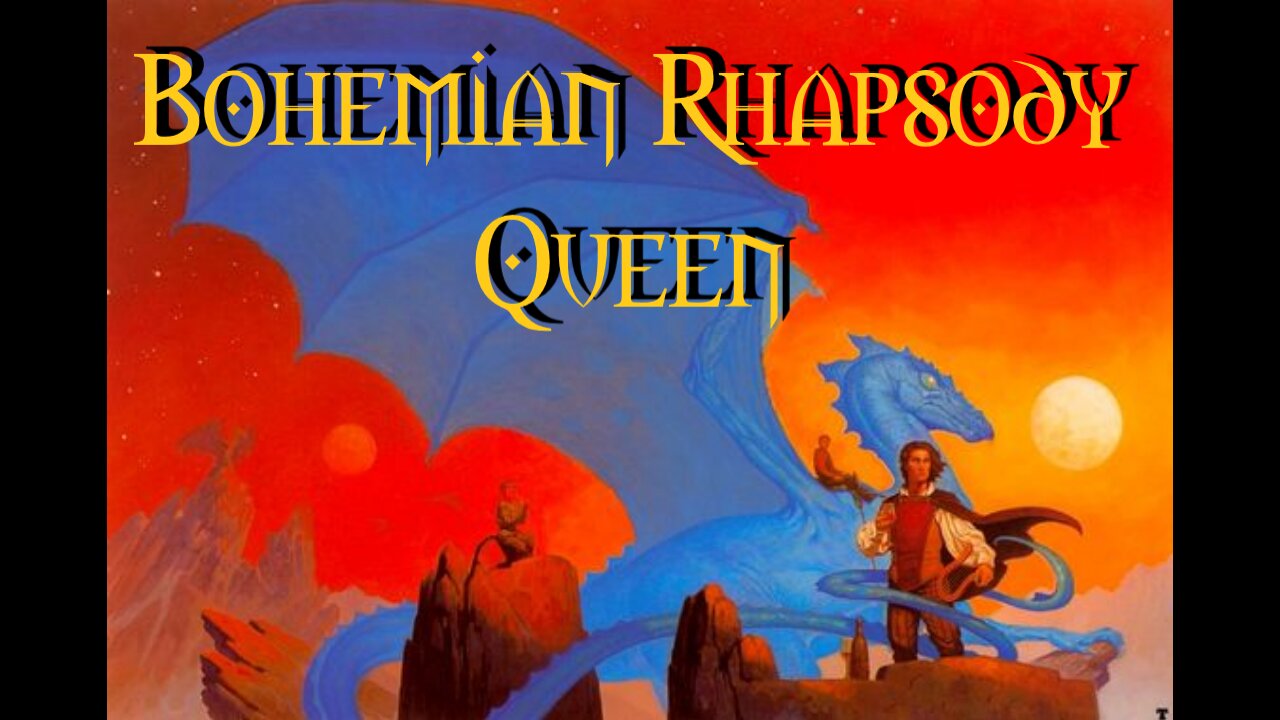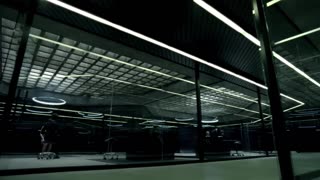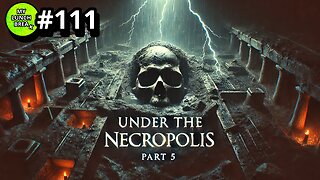Premium Only Content

Bohemian Rhapsody Queen
"Bohemian Rhapsody" is a song by the British rock band Queen, released as the lead single from their fourth album, A Night at the Opera (1975). Written by lead singer Freddie Mercury, the song is a six-minute suite, notable for its lack of a refraining chorus and consisting of several sections: an intro, a ballad segment, an operatic passage, a hard rock part and a reflective coda. It is one of the few progressive rock songs of the 1970s to achieve widespread commercial success and appeal to a mainstream audience.
Mercury referred to "Bohemian Rhapsody" as a "mock opera" that resulted from the combination of three songs he had written. It was recorded by Queen and co-producer Roy Thomas Baker at five studios between August and September 1975. Due to recording logistics of the era, the band had to bounce the tracks across eight generations of 24-track tape, meaning that they required nearly 200 tracks for overdubs. The song parodies elements of opera with bombastic choruses, sarcastic recitative, and distorted Italian operatic phrases. Lyrical references include Scaramouche, the fandango, Galileo Galilei, Figaro, and Beelzebub, with cries of "Bismillah!"
Although critical reaction was initially mixed, retrospective reviews have acclaimed "Bohemian Rhapsody" as one of the greatest songs of all time and is often regarded as the band's signature song. The promotional video is credited with furthering the development of the music video medium. It has appeared in numerous polls of the greatest songs in popular music, including a ranking at number 17 on Rolling Stone's list of "the 500 Greatest Songs of All Time. A Rolling Stone readers' poll ranked Mercury's vocal performance as the greatest in rock history.
"Bohemian Rhapsody" topped the UK Singles Chart for nine weeks (plus another five weeks following Mercury's death in 1991) and remains the UK's third best-selling single of all time. It also topped the charts in countries including Canada, Australia, New Zealand, Ireland, and the Netherlands, and sold over six million copies worldwide. In the United States, the song peaked at number nine in 1976, but reached a new peak of number two after appearing in the 1992 film Wayne's World. In 2004, the song was inducted into the Grammy Hall of Fame. Following the release of the 2018 biopic Bohemian Rhapsody, it became the most streamed song from the 20th century. In 2021, it was certified Diamond in the US for combined digital sales and streams equal to 10 million units.
According to Mercury's friend Chris Smith (a keyboard player in Smile), Mercury first started developing "Bohemian Rhapsody" in the late 1960s; Mercury used to play parts of songs he was writing at the time on the piano, and one of his pieces, known simply as "The Cowboy Song", contained lyrics that ended up in the completed version produced years later, in 1975, specifically, "Mama ... just killed a man." Producer Roy Thomas Baker, who began working with Queen in 1972, related how Mercury once played the opening ballad section on the piano for him in Mercury's flat:
He played the beginning on the piano, then stopped and said, "And this is where the opera section comes in!" Then we went out to eat dinner.
Guitarist Brian May said the band thought that Mercury's blueprint for the song was "intriguing and original, and worthy of work". According to May, much of Queen's material was written in the studio, but this song "was all in Freddie's mind" before they started.
Queen spent a month rehearsing at Ridge Farm Studio in Surrey in mid-1975, and drummer Roger Taylor recalled that "Bohemian Rhapsody" was one of the songs the band worked on while they were there. Recording began on 24 August 1975 at Rockfield Studio 1 near Monmouth, South Wales, after a three-week rehearsal at Penrhos Court, near Kington, Herefordshire. During the making of the track, four additional studios – Roundhouse, Sarm Studios, Scorpio Sound, and Wessex Sound Studios – were used. According to some band members, Mercury mentally prepared the song beforehand and directed the band throughout.
Mercury used a C. Bechstein concert grand piano, which he played in the promotional video and the UK tour. Due to the elaborate nature of the song, it was recorded in various sections. The piano was allegedly the same one Paul McCartney had used to record the Beatles' song "Hey Jude", as well as the same one Rick Wakeman used on David Bowie's 1971 album Hunky Dory.
Baker recalled in 1999:
"Bohemian Rhapsody" was totally insane, but we enjoyed every minute of it. It was basically a joke, but a successful joke. [laughs] We had to record it in three separate units. We did the whole beginning bit, then the whole middle bit and then the whole end. It was complete madness. The middle part started off being just a couple of seconds, but Freddie kept coming in with more "Galileos" and we kept on adding to the opera section, and it just got bigger and bigger. We never stopped laughing ... It started off as a ballad, but the end was heavy.
May, Mercury, and Taylor reportedly sang their vocal parts continually for 10 to 12 hours a day. The entire piece took three weeks to record, and in some sections featured 180 separate overdubs. Since the studios of the time only offered 24 track analogue tape, it was necessary for the three to overdub themselves many times and "bounce" these down to successive sub-mixes. In the end, eighth-generation tapes were used. The various sections of tape containing the desired sub-mixes had to be spliced (cut and assembled in the correct sequence). May recalled placing a tape in front of the light and being able to see through it, as the tape had been used so many times.
A similar story was told in 1977 by Taylor regarding the elaborate overdubs and sub-mixes for "The March of The Black Queen" for the album Queen II. At that time, the band was using 16 track equipment.
Producer Baker recalls that May's solo was done on only one track, rather than recording multiple tracks. May stated that he wanted to compose "a little tune that would be a counterpart to the main melody; I didn't just want to play the melody". The guitarist said that his better material stems from this way of working, in which he thought of the tune before playing it: "The fingers tend to be predictable unless being led by the brain." According to Baker,
... the end of the song was much heavier because it was one of the first mixes to be done with automation ... If you really listen to it, the ballad starts off clean, and as the opera section gets louder and louder, the vocals get more and more distorted. You can still hear this on the CD. They are clearly distorted.
In May 2023, an early handwritten draft unearthed from an auction of items that belonged to Mercury, courtesy of his friend Mary Austin, revealed that Mercury originally considered the song to be titled "Mongolian Rhapsody". It was explained that he wrote the title along with the lyrics in 1974 on a page of stationery from defunct airline British Midland Airways, but crossed out the word "Mongolian" in place of "Bohemian".
-
 20:42
20:42
Psychological operations
13 days agoUncontrollable Urge Whip It (I Can't Get No) Satisfaction That's Good Mongoloid Beautiful World DEVO
463 -
 LIVE
LIVE
tacetmort3m
19 hours ago🔴 LIVE - SOLO RANK GRINDING CONTINUES - MARVEL RIVALS
1,256 watching -
![Shadows Of Chroma Tower, Alpha Playtest [Part 1]](https://1a-1791.com/video/fwe2/1d/s8/1/5/Q/U/n/5QUnx.0kob-small-Shadows-Of-Chroma-Tower-Alp.jpg) LIVE
LIVE
iViperKing
9 hours agoShadows Of Chroma Tower, Alpha Playtest [Part 1]
1,441 watching -
 54:05
54:05
TheGetCanceledPodcast
6 hours ago $8.60 earnedThe GCP Ep.11 | Smack White Talks Smack DVD Vs WorldStar, Battle Rap, Universal Hood Pass & More...
75.7K18 -
 13:37
13:37
Exploring With Nug
10 hours ago $5.17 earnedSUV Found Underwater Searching For Missing Man Jerry Wilkins!
46K1 -
 2:58:21
2:58:21
xBuRnTx
5 hours ago1st Warzone Stream Online
33.7K2 -
 6:10:21
6:10:21
JdaDelete
1 day ago $3.27 earnedDino Crisis - Sega Saturday
37.1K3 -
 23:22
23:22
MYLUNCHBREAK CHANNEL PAGE
1 day agoUnder The Necropolis - Pt 5
58.4K27 -
 2:26:11
2:26:11
Jewels Jones Live ®
2 days agoWINNING BIGLY | A Political Rendezvous - Ep. 108
125K43 -
 2:04:49
2:04:49
Bare Knuckle Fighting Championship
4 days agoBKFC FIGHT NIGHT MOHEGAN SUN FREE FIGHTS
57.8K7